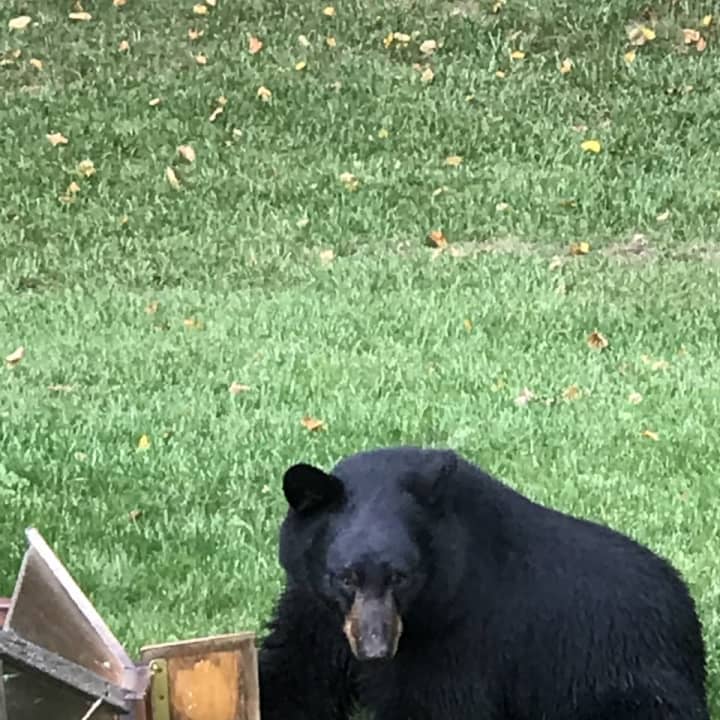After years of dwindling numbers, the black bear is on the comeback, and that's good news for the environment in the way of reducing the number of problem deer and insects in the area, says Budd Veverka, preserve manager/staff biologist for the Mianus River Gorge in Northern Westchester.
Mianus River Gorge is a 755-acre nature preserve jointly owned by The Nature Conservancy and the Mianus River Gorge Preserve in Bedford.
But for residents who have black bears rummaging through their garbage cans and destroying bird feeders or looking in their windows, the thought of a growing bear population might be disconcerting.
Veverka and Gorge staff are currently conducting research looking at black bear movement and populations within Westchester, Putnam, and Fairfield Counties, using remote cameras.
This spring, they captured 1,225 images of approximately 20 different bears, all within 20 miles of Pound Ridge. When the cameras are not in the field, the organization relies on public photos and reports to track bear activity.
Just since the end of September, they have had local public reports of bear activity on Ward Pound Ridge Reservation, Bob Hill Road, Mianus River Road, and East Middle Patent Road.
“Connecticut has gone from no bears to 500-700 bears over the past 20 years," Veverka said. "The area around Pound Ridge has a number of transient bears moving through during the year, with, we suspect, a few resident bears."
He explains that over the past 20 years the bears have adapted to development and people.
"They are very intelligent," he said. "They get used to people's voices where they live and begin to recognize them and even dogs."
That makes them less afraid to come into yards to eat because they know who they are dealing with. That also means if you walk outside and yell at the bear, they might not be afraid of you, because, they know your voice.
He suggests residents take two pans and bang them together to get bears to move out of the area.
"That will be a noise they won't like or aren't used to and they will move away," he said.
Of course, he adds, if a bear is an extreme problem and threatens any residents, the authorities should be called so the bear can be removed.
Ways to stop the bears from coming eat are pretty easy, he adds.
Only leave out a bird feeder from Dec. 1 to April 1, he says because bird feed seems to be the black bear's favorite food of choice. Bears will go to great lengths to get to any feeder that is lower than 7-feet above the ground: "They really do love bird feed."
Residents can also make sure they don't have any dog food or unlocked garbage cans in their yards or open garages.
"We plan to offer workshops at libraries in the spring to help educate the public about ways to deal with bears and for help in tracking them.
Veverka is hoping that the public will help become their eyes in tracking the bears so they can be better understood, and counted for research. One important element they are trying to determine is whether female black bears are moving back into the area with their young, or if only male and young bears are in the area.
If females move back into the area, the population could become even larger.
"Bears are just doing their job when looking for food," he said. "They eat, reproduce and sleep and wake up to do it again."
Residents can report their sighting by email at H2Hbears@gmail.com or at one of the apps the organization works with including www.inaturalist.org/projects/hudson-to-housatonic-bears or www.iseemammals.org.
Click here to follow Daily Voice Scarsdale and receive free news updates.


